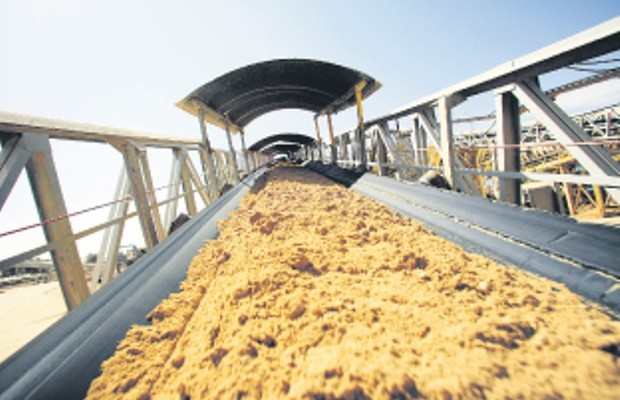As the world’s population approaches 8 billion people, the phosphate fertilizer crisis is putting pressure on the means of production. When it comes to farming operations around the world, nutrients like nitrogen and phosphorus are essential for optimal plant growth and productivity. While nitrogen is one of the most abundant resources on the planet, phosphorous can only be obtained by plants when in the form of phosphate, forcing farmers to rely on phosphate rock mining to provide this essential fertilizer. As the demand for food supply increases around the world, humanity’s reliance on phosphate has become a concern, prompting governments and private businesses to develop alternatives.
The majority of global phosphate production occurs in China, the United States and Morocco, the latter of which has built up a stockpile of approximately 50 billion metric tons (MT), representing approximately 72 percent of the 70 billion tons available worldwide as of August 2019. Together with China, Algeria, and Syria, the four nations with the largest phosphate reserves account for over 80% of the global rock phosphate supply. Phosphate’s importance to global food production makes it an essential fertilizer, however, scientists have warned that a global phosphorous shortage could set in by 2023. “Phosphate supply is potentially a very big problem,” said Martin Blackwell of Rothamsted Research, an agricultural research center in the United Kingdom, in conversation with The Guardian.
The severity of the phosphate shortage around the world caused the European Commission to declare the nutrient a “critical raw material” as far back as 2014. The European Union’s only reserves of phosphate are located in Finland, with a majority of phosphate consumed imported from Morocco, Algeria, Russia, Israel, and Jordan. With countries like the US, China and India expected to run out of their domestic phosphate supplies in the next generation, the global supply chain appears to be tightening with an increasing reliance on Morocco to secure global food production needs. The looming phosphate shortage has driven innovators to search for new sources of phosphate for farming purposes, however, the over-use of phosphate as a fertilizer has also led to its own list of environmental problems.
Concerns regarding the excess use of phosphate in current farming techniques have also exacerbated the supply issue, emphasizing the need for the farming industry to transition away from a global dependence on the nutrient. Despite the importance of phosphorous as an essential nutrient, excessive phosphate use can result in the contamination of water systems, causing damage in the form of widespread algae blooms and unsafe water conditions. Due to phosphate’s use in farming around the world, the threat of water damage through nutrient pollution is a global concern. According to the United States Environmental Protection Agency, “nutrient pollution is one of America’s most widespread, costly and challenging environmental problems.”
With future phosphorous supplies uncertain and over-use becoming a major issue, innovative energy companies are beginning to develop new sources of nutrients for crops in the form of organic bio-fertilizers. For example, EarthRenew has developed a patented production process that converts livestock waste into a slow-release organic fertilizer that is rich in nutrients. The company’s fertilizer product has been certified organic and is currently being distributed in the US and Canada through its partner, Sun Country Farms. “There is a significant opportunity for technologies that can serve to stabilize the nutrients and carbon content from these agricultural residues – particularly from raw livestock manures,” said EarthRenew CEO Keith Driver. “Converting these materials into stable, high-value fertilizers, provides the economic incentive for these nutrients to be sold for use in soils and cropping systems that are deficient in these nutrients. The alternative will see these raw manures over applied locally to the livestock source given the lack of economic incentive to do otherwise.”
Established agricultural supply and fertilizer companies have begun to recognize the need for organic fertilizer solutions. A subsidiary of Scotts Miracle-Gro, Hawthorne Canada, recently announced it had signed a distribution agreement with Earth Alive Technologies in order to sell its Dr. Marijane Root Probiotic in Canada. The product is a microbial fertilizer designed specifically for cannabis cultivation. According to Earth Alive, testing on cannabis plants has revealed Dr. Marijane is capable of boosting plant yield by up to 28%. The adoption of organic fertilizer alternatives has helped to drive the emerging bio-fertilizer industry, which Research and Markets reports grew at a compound annual growth rate (CAGR) of 14.3 percent from 2011 to 2018, reaching a total size of US$1.8 billion. Soil degradation, rising costs, and the need for more sustainable farming practices have also driven growth as farmers transition from chemical fertilizers to more environmentally-friendly and sustainable organic alternatives.
Biofertilizers were first used in Europe and North America, however, farmers around the world in areas like Asia and South America are beginning to consider more sustainable fertilizer alternatives. The growing popularity of biofertilizers around the world is expected to drive growth in the sector, with Adroit Market Research projecting the industry to continue to grow at a CAGR of 13% through 2025. As the warning signs regarding farming’s reliance on phosphorous continue to mount, established agricultural brands and emerging innovators are beginning to offer alternatives in the organic fertilizer space. With a limited amount of phosphorous available for global farming needs, new forms of farming nutrients are expected to help provide future food supplies.
‘Phosphate Fertilizer Crisis Drawing Attention to Sustainable Alternatives’ – Article by Melissa Pistilli – Investing News.
The Article can be downloaded here




